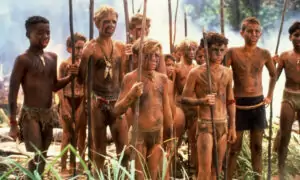Where there is a rule, there is also a violation of this rule. In a society regulated by laws, such a violation is called a crime. For centuries, crimes were among the major problems for societies to solve; criminals were detained, isolated, and punished—with varying severity—but it did not help to eliminate or prevent crime. As if this is not enough, in many countries, the problem of crime poses yet another challenge to both law enforcement systems and society in general—and this challenge is juvenile delinquency. It is more or less clear what to do with grown-up criminals: the range of actions against them varies from correctional labor to capital punishment, and is generally well-thought out and adjusted. However, in the case of juvenile criminals, it is often unclear which punishment is appropriate, what causes underage individuals to commit crimes, and what are the ways to prevent it. There are, however, numerous theories regarding these questions.

✅ AI Essay Writer ✅ AI Detector ✅ Plagchecker ✅ Paraphraser
✅ Summarizer ✅ Citation Generator
The most obvious and widely-discussed factor leading to juvenile delinquency is the surroundings in which children grow up. If the environment is not suitable, not contributing to a child’s moral and intellectual development, he or she may grow up with a lack of strong moral guidance. One of the main constraints holding an individual from committing crimes is not obedience to the law, but rather the moral, ethical, the immanent understanding of what is right and what is wrong; usually, this develops under the influence of parents and beneficial surroundings such as friends, authoritative social groups, and so on. When growing up, children experiencing these influences develop such qualities and abilities as empathizing with other people’s pain; feeling remorse or moral discomfort for doing wrong; controlling their impulses and intents, as well as aggressive behaviors; and respect for other people’s lives, properties, and feelings. However, if there is little-to-no positive influence, children tend to develop moral poverty: the incapacity to control their behaviors guided by the aforementioned skills and principles. According to A.E. Sadler, the author of the term, “moral poverty begets juvenile super-predators whose behavior is driven by two developmental defects. First, they are radically present-oriented; they live entirely in and for the present moment. Second, the super-predators are radically self-regarding; they place no value on the lives of their victims, whom they dehumanize as worthless.” In other words, a child or teenager may commit crimes not because of being sociopathic or evil, but due to the absence of understanding that what they are doing is wrong; the motives for committing a crime may differ: self-defense or impulsive aggression, hunger (the usual reason for theft committed by children in underdeveloped countries), envy, and so on, but the reason is the same: the inability to distinguish rights from wrongs (Regis University).
Although the majority of sociologists and criminologists agree on the importance of the environment in which an individual grows up, there are more debated impacts causing juvenile delinquency. One of them is the influence of video games and other media such as music or TV programs. It is true that contemporary media is filled with violence, sexual content, exploitation, and stereotypes. This is even more true for video games; many of them cause parents all over the world to panic because of their often shocking content. For example, such games as Postal 2 or Manhunt promote images of ruthless serial killers, eliminating their victims with severe brutality; the infamous Grand Theft Auto series depicts all shades of living a life as a criminal—an impulsive sociopath (Trevor), an illegal migrant (Niko), or a “classy” mafia-style gangster (Michael). There are more examples than this essay could possibly contain. However, the extent to which the behavioral models shown in these games impact children with already-established moral principles is still in debate. Presumably, violent media can, to some degree, make an individual more aggressive or impulsive, but it is doubtful that it can cause a mentally and morally healthy child from a normal family to cross the line and commit a crime (IFR.net).
What can, however, cause a morally-stable juvenile to commit a crime is drugs. Teenagers rebel: this is an axiom known throughout centuries. Psychologically, this rebellion can be explained by the need to separate from parents, transit from childhood to adolescence, become (or at least feel) autonomous and independent. Still, even though this process is normal and even necessary, it does not mean that during its course, teenagers are reasonable. Many of them associate maturity with substance intake: alcohol or drugs is what juveniles often use for “initiation,” trying to be “cool” or “adult.” Needless to say that since substances cause strong addiction and/or change normal behaviors to being unpredictable or even violent, teenagers affected by them can commit crimes being in an altered state of mind, or under the pressure of money to get more substances (baysingerlaw.com).
It becomes clear that in order to prevent or decrease juvenile delinquency, it is not enough to encourage parents to simply establish a stricter control over their children—doing so would be shifting responsibility from the whole society to its separate members. Given that it is the environment influencing children the most, it is important to solve such social problems as dysfunctional families and surroundings, like bad neighborhoods and ghettos (which are often the source of physical and emotional abuse, preventing children to develop strong moral qualities and causing them to replicate violent behaviors) to promote and propagate law-abiding behaviors. What parents can do, however, is try to keep their children away from dangerous substances; it is important to remember that although a teenager cannot be help from rebelling (since this process is natural and caused by both mental and hormonal factors), he or she can be at least guided towards a more healthy rebellion: for example, skateboarding or street art instead of smoking marijuana.
Works Cited
- “Contributing Factors to Juvenile Crime.” Regis Criminology Programs. N.p., 24 Mar. 2016. Web. 10 May 2017.
- “The Role of Violent Media Production in Juvenile Delinquency.” IFR.net. N.p., 15 June 2013. Web. 10 May 2017.
-
“Contributing Factors to Juvenile Delinquency.” Baysinger Henson Reimer & Cresswell PLLC. N.p., 10 Apr. 2017. Web. 10 May 2017.
Follow us on Reddit for more insights and updates.





Comments (0)
Welcome to A*Help comments!
We’re all about debate and discussion at A*Help.
We value the diverse opinions of users, so you may find points of view that you don’t agree with. And that’s cool. However, there are certain things we’re not OK with: attempts to manipulate our data in any way, for example, or the posting of discriminative, offensive, hateful, or disparaging material.